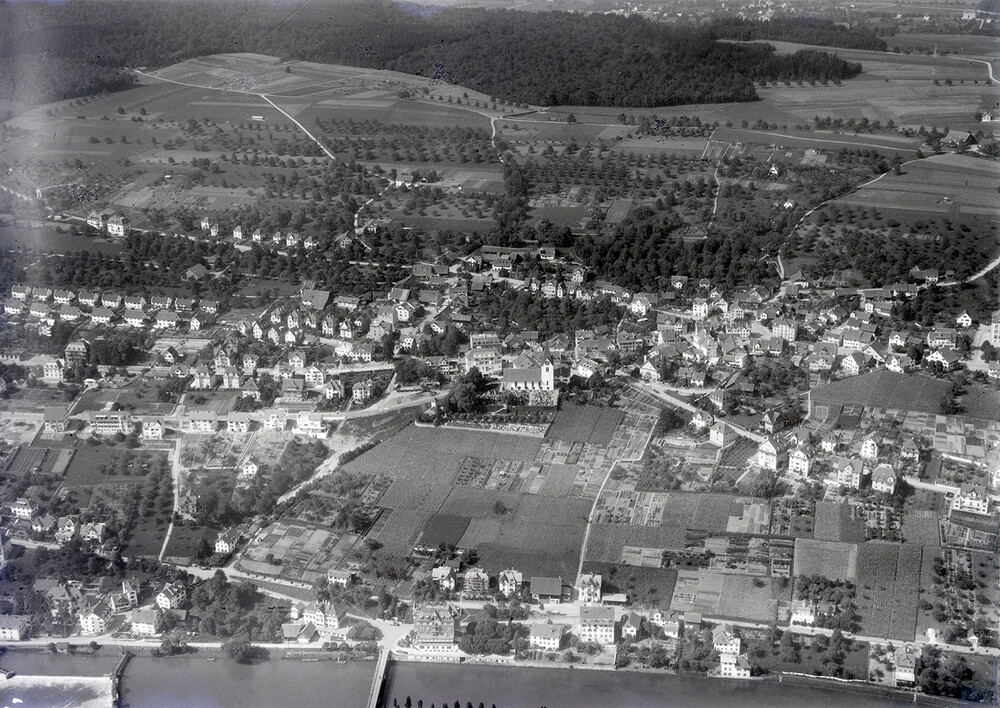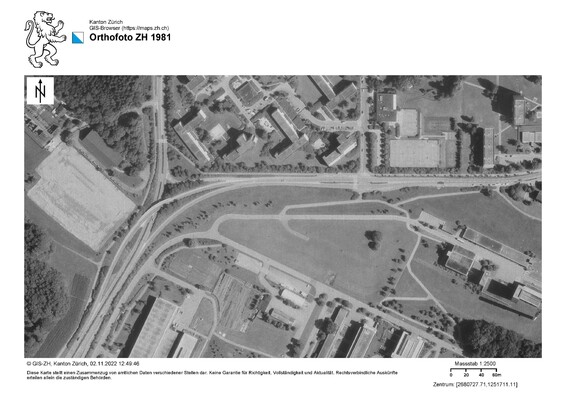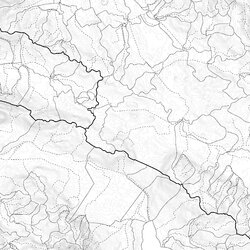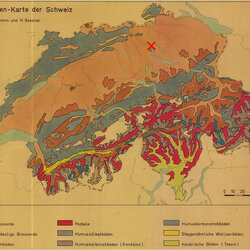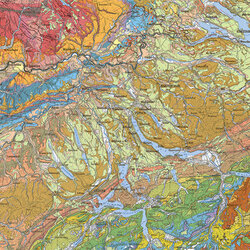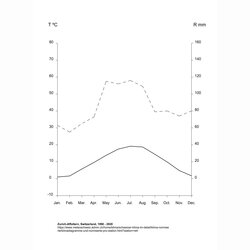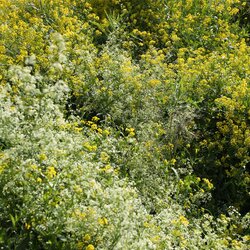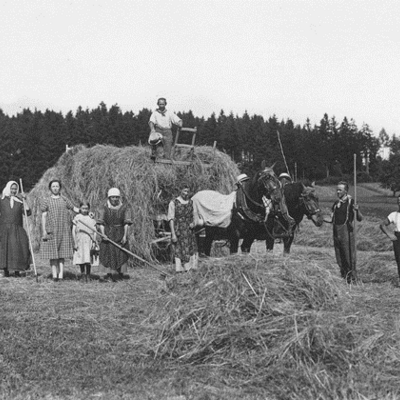
History
The land around Höngg has a long agricultural history. The sunny slopes of the Hönggerberg have been cultivated with vines since the 13th century. On the plateau of the Hönggerberg, where the campus is located today, fruit trees and arable land were used for crop cultivation and livestock farming. During the Second World War, large areas of forest were cleared on the Hönggerberg and planted with potatoes, beets and barley as part of the so-called "Anbauschlacht" (cultivation battle) in order to secure the population's food supply.
In the 1950s, ETH Zurich, which had previously been located exclusively in the city center, needed more space and decided to relocate parts of its institution. In 1959, ETH bought 46 hectares of land on the Hönggerberg plateau, between the two villages of Höngg and Affoltern and between the two forests of Käferberg and Hönngerberg. Construction work began shortly afterwards and continues to this day, which reshaped the natural terrain completely. As one of the last witnesses to the past, a large and old oak tree has survived the expansion of the ETH. The tree was already there before and continues to grow today, symbolizing the original natural topography.
To explore the specific history of our garden, we can trace important moments using freely accessible photos from ETH e-pics and satellite images from the GIS portal of the Canton of Zurich. The construction of the ETH Library's magazine HDB in 1984 and 1985 was decisive for the piece of land of the garden. As can be seen from the pictures, practically the entire plot became a building site, which resulted in a serious change to the ground.
Even after finishing construction work for the HDB building, construction works in and around our garden never stopped. In the last 25 years, four other different moments have had a particular impact on the garden:
1. In 1998, the western part of the garden was affected by the construction of a new road.
2. In 2006, the biggest disruption to this day took place. The immediately adjacent buildings to the east, the HDB library building and the HKK daycare center, were rebuilt and extended. As a result, an access road for the construction machinery led directly through the garden. Building materials and equipment were also stored in the garden. Remains of the road and building rubble can still be found in the garden today. Some of it was probably simply covered with a thin layer of topsoil.
3. In 2010, 18 trees were planted in the garden. These trees came from the other side of the campus, where they stood in the middle of the bicycle parking lots that had to make way for the construction of the new sports center. 7 trees did not survive, which is why there are now 11 trees.
4. In 2019, the site was used to store topsoil. The topmost 20 cm of topsoil from a nearby construction site was stored there, resulting in a small mound about 20 meters wide, 30 meters long and 1.5 meters high. By looking at the soil colors from above, one can see that there are three different topsoils. In February 2024, the topsoil was removed and used elsewhere on the campus.
The photo and drawing series below document these changes over time. The drawings show these four moments from the aerials in our own representation form as a foundation for student's interventions.
